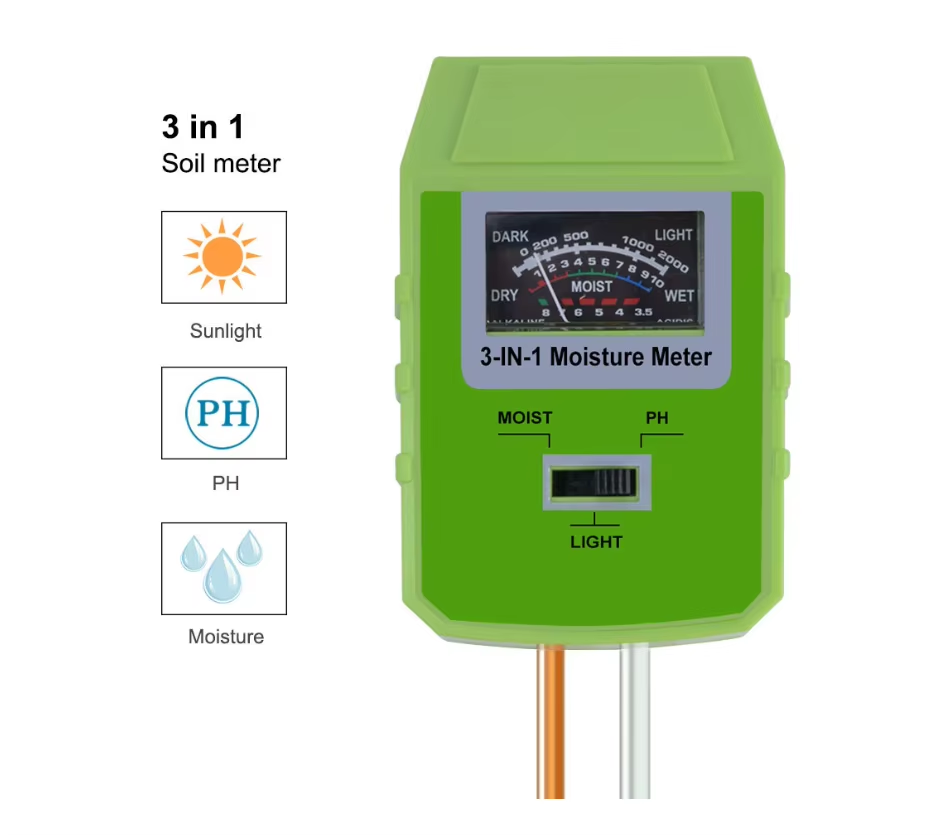Whether you’re a houseplant enthusiast or a vegetable gardener, a moisture meter is a useful tool for any gardener. Moisture meters measure the amount of water in the soil, but there are more advanced models that measure other factors such as temperature and pH.
Plants will show signs when their needs are not being met, having meters that can measure these basic needs is a good tool to have with you.
Whether you’re a tech-savvy plant grower or a newbie, You can evaluate various plant moisture meters based on size, probe length, display type and readability, and price.
Better Homes & Gardens are experienced gardener and has spent hours researching the best plant moisture meters.
The moisture meter is one of the most widely used meters by gardeners. It is reliable, accurate and produces results immediately after application to the soil. The single probe design helps prevent root damage when testing soil, and the probe is durable and easy to insert into the soil for measurements.Because the meter is sensitive, it is best to use it only in standard soil. Trying to push the probe into hard or rocky soil may damage it. As with other meters, it should never be immersed in liquid. The indicator will display the reading immediately. So the moisture content can be determined at a glance.
This simple and reliable moisture meter is ready to use right out of the box and is easy to use for beginners. No need to worry about batteries or setup – just insert the probe into the soil to the height of the plant’s roots. The indicator will instantly display readings on a scale of 1 to 10 ranging from “dry” to “wet” to “wet”. Each section is color coded so the moisture content can be determined at a glance.
After using the probe, you will need to remove it from the soil and wipe it clean. As with other probes, you should never immerse the probe in liquid or attempt to insert it into hard or rocky soil. This will cause permanent damage to the probe and prevent it from giving accurate readings.
This rugged and accurate meter connects to a console with LCD display and Wi-Fi so you can check soil moisture anytime.
If you want a reliable moisture meter that can be left in the ground for continuous monitoring, the Soil Moisture Tester is a great choice. Plus, it comes with a host of technology features such as a wireless display console and Wi-Fi for easy monitoring of humidity levels.You can easily check soil moisture levels throughout the day.
You can also purchase a Wi-Fi gateway that will allow you to access real-time soil moisture data from anywhere in the world. It has convenient graphs showing readings for the previous day, week, and month so you can better track your watering habits.
Using the software, you can receive personalized alerts on your computer about any changes in soil conditions, The software also supports soil moisture logging.
The meter also measures electrical conductivity, which indicates the amount of fertilizer in the soil.
The digital display makes the meter easier to read and provides additional measurements. This digital moisture meter measures not only soil moisture, but also temperature and electrical conductivity (EC). Measuring EC levels in soil is useful because it determines the amount of salt in the soil and thus indicates the amount of fertilizer. This is a great tool for experienced gardeners or those who grow large volumes of crops to ensure your plants are not over- or under-fertilized.
The soil meter measures three important factors for plant health: water, soil pH and light. Soil pH is an important factor in plant health, but it is often overlooked by new gardeners. Every plant has its own preferred pH range – incorrect soil pH can result in poor plant growth. For example, azaleas prefer acidic soil, while lilacs prefer alkaline soil. While it’s fairly easy to amend your soil to be more acidic or alkaline, you first need to know your soil’s base pH level. To use the meter, simply switch the button between the three modes to measure each factor. Carefully insert the probe into the soil, avoiding rocks, and wait a few minutes to take readings. The results will appear on the upper display.
In addition to measuring soil moisture, some meters measure other factors that affect plant health. Many meters measure some combination of:
Electrical Conductivity (EC): While Back recommends that most new gardeners use a simple meter, but the meter that shows EC, such as the Yinmik Digital Soil Moisture Meter, can be useful for some gardeners.
A soil conductivity meter measures the electrical conductivity of the soil to determine the salt content. Fertilizers are typically made up of salts, and salt buildup is caused by repeated applications of fertilizers over time. The higher the salt level, the higher the likelihood of root damage. By using an EC meter, gardeners can prevent overfertilization and root damage. damage.
pH: All plants have a preferred pH range, and soil pH is an important but easily overlooked factor in plant health. Most gardens require a neutral pH level of 6.0 to 7.0.
Light levels.
The moisture meter works by “measuring the conductivity of the soil between two metal probes, and even a probe that looks like there is only one probe actually has two metal pieces on the bottom. Water is a conductor, and air is an insulator. The more water in the soil, the higher the conductivity. Therefore, the higher the meter reading. The less water in the soil, the lower the meter reading.
Typically you need to insert the meter as far as possible to measure the moisture level near the roots. When measuring potted plants, Back warns: “Insert the probe as far into the pot as possible without touching the bottom. If you allow it to touch the bottom, the dipstick may be damaged.
Post time: Jul-18-2024


